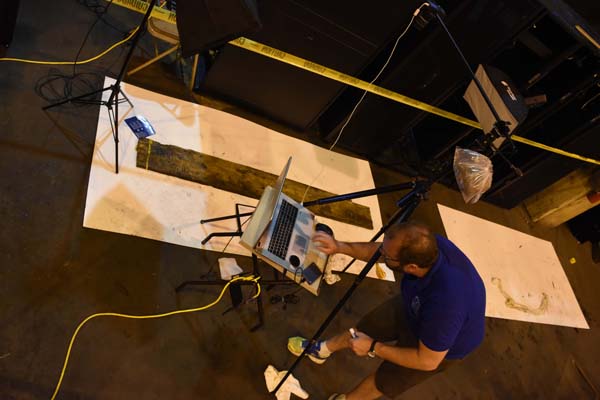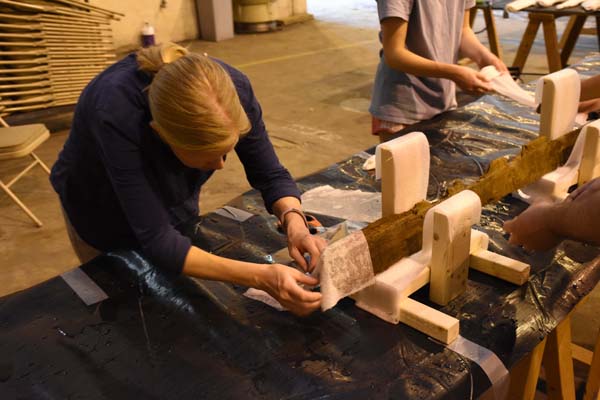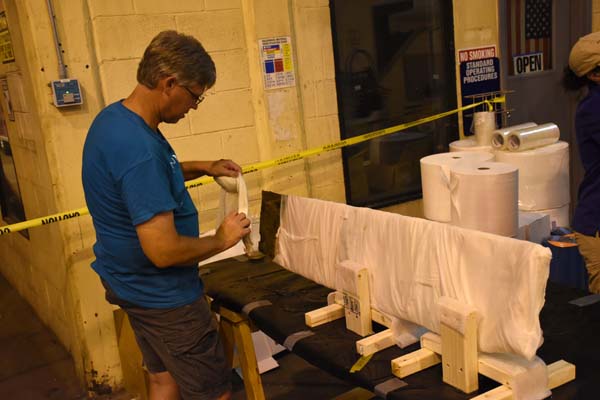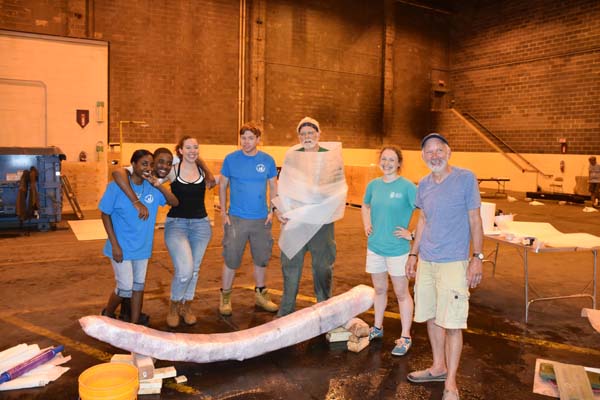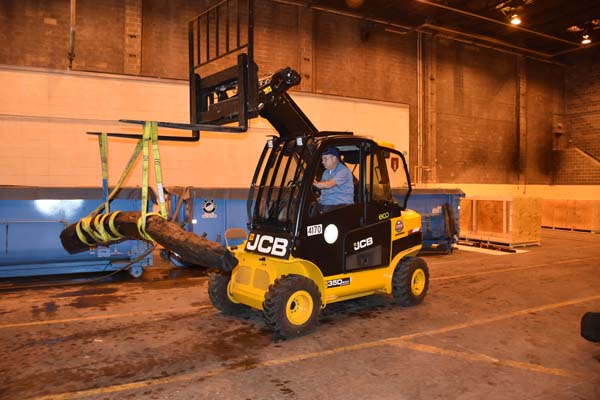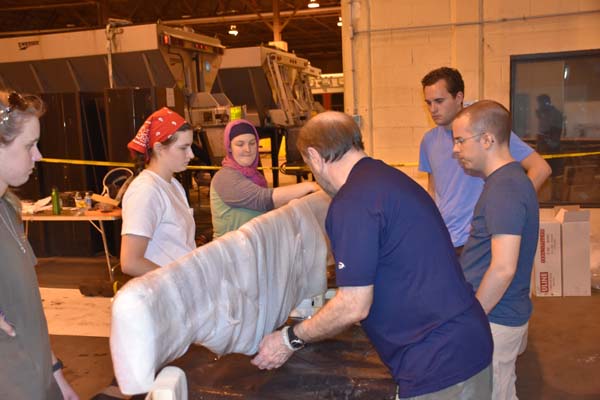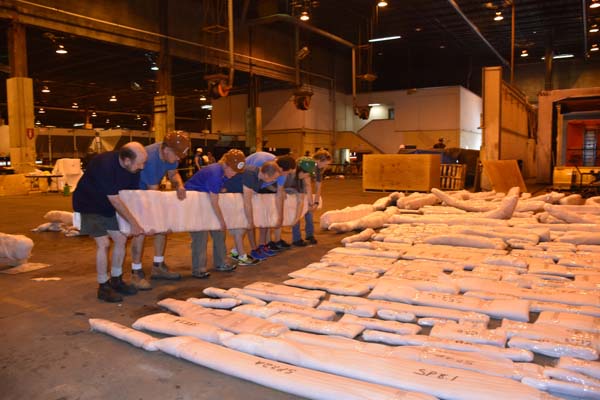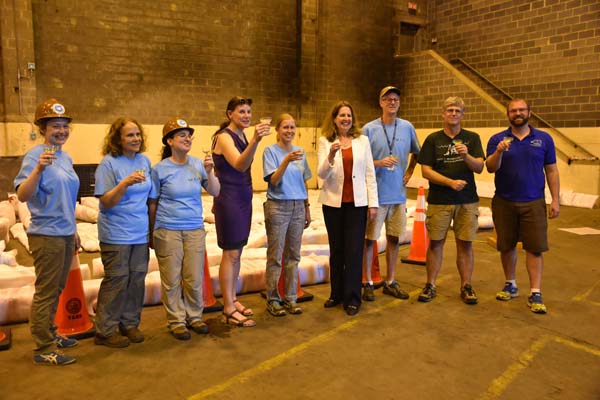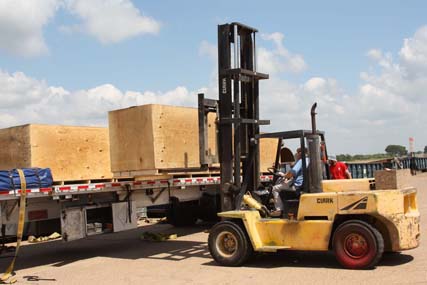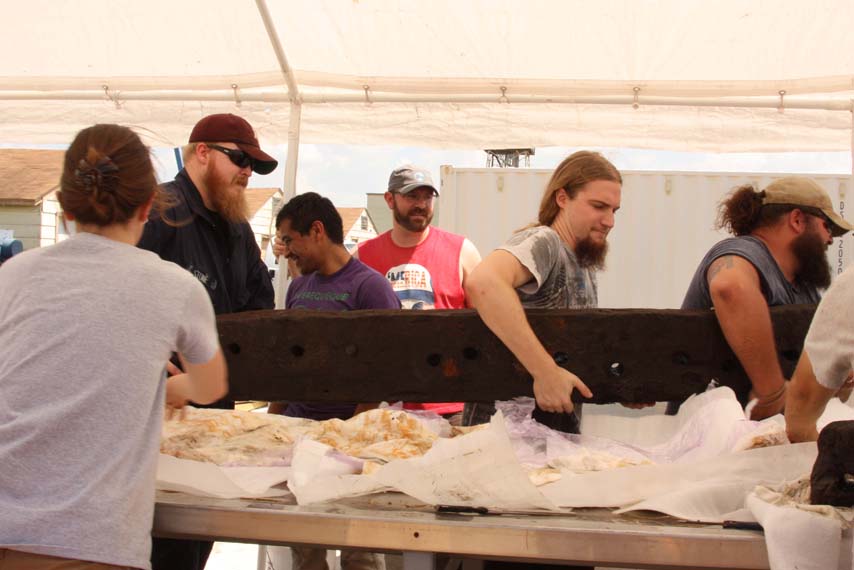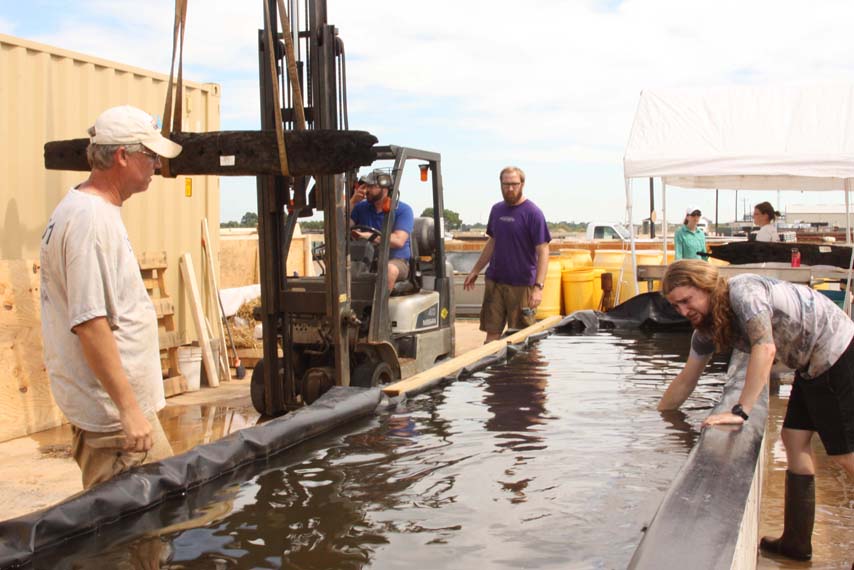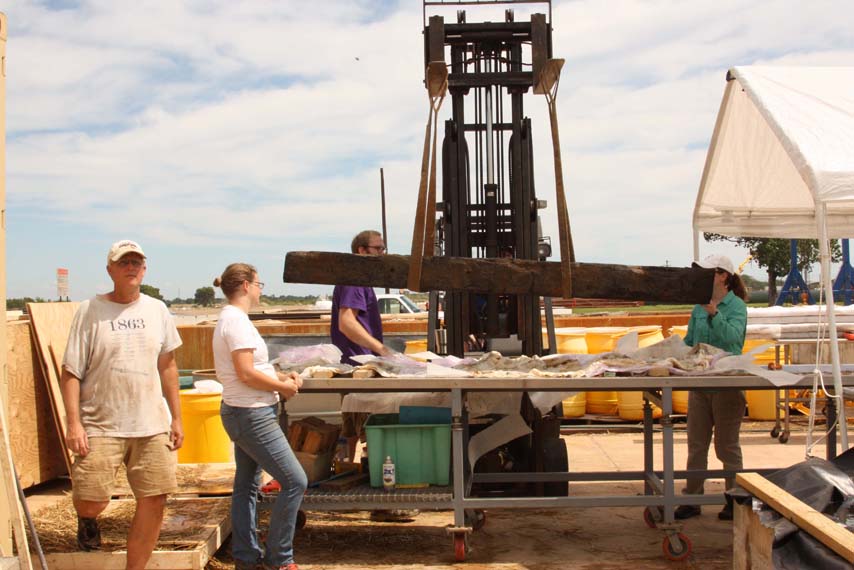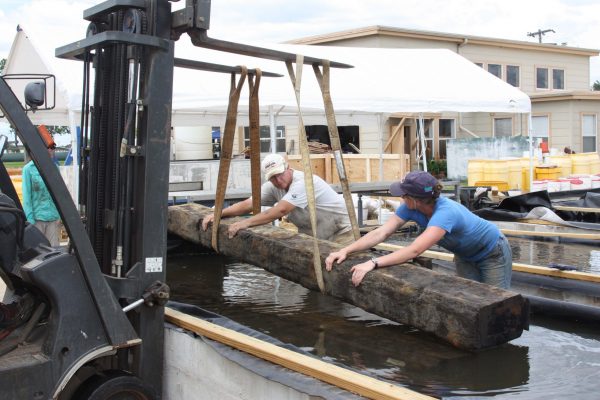Shipping the Alexandria, Virginia Ship

From Virginia To Texas
In June of 2017, Dr. Peter Fix and Dr. Chris Dostal travelled to Virginia to work with archaeologists and volunteers from Alexandria Archaeology, to prepare over 300 pieces of the ship for transportation to the CRL in Texas. Because it is imperative that waterlogged wood is kept wet, each timber was photographed and inventoried, then wrapped in a wet paper towel-like material to keep it moist, wrapped a second time in plastic to seal in the moisture, and finally wrapped in foam to protect the fragile timbers from damage while shipping. Once prepared, the timbers were carefully packed into custom-built wooden crates and immediately transported by tractor-trailer to the Conservation Research Laboratory at Texas A&M University. There, the CRL staff, students, and volunteers re-inventoried each timber, unwrapped them, and placed them in fresh water vats to await detailed documentation. The hard work and care mustered by the dedicated volunteers at Alexandria Archaeology for this week-long project proved a success, as each piece of wood arrived in Texas still moist after the 1400-mile journey.
The slideshow below allows you to click on any image and see a larger view of the slide.
Process Stages
Stage 1: Excavation
Stage 2: Shipping<=
Stage 3: Documentation
Stage 4: Conservation
Contract Services
The CRL works with a variety of academic institutions, museums, historical societies, government offices, and private individuals. Our goal is to create viable conservation strategies of the highest standard that can be accomplished at minimal cost. For more information, visit our services page.
Read about the faculty and conservators who run the Conservation Research Labratory. We are also aided by several individuals who volunteer their time to help conserve artifacts. If you are interested in joining the volunteers at the CRL, please contact our lab manager.
Support
Monetary donations and volunteer workers are vital to the ongoing success of the Conservation Research Laboratory. If you would like to volunteer your time and expertise, please write us here. If you would like to become one of our donors, please click the link below and direct your gift to: Center for Maritime Archaeology and Conservation.

